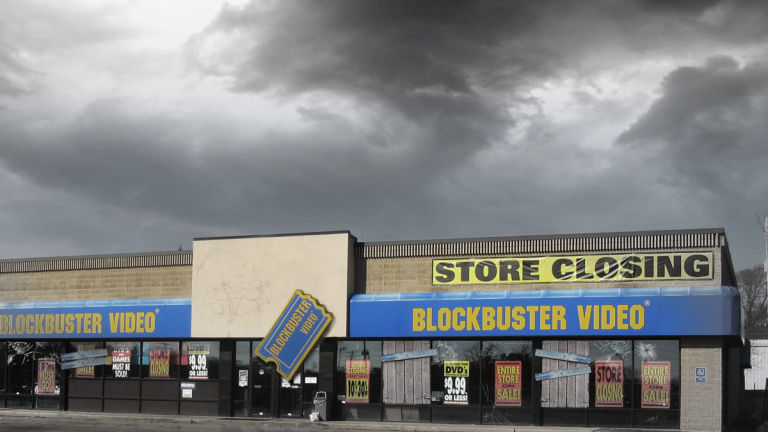How Blockbuster Economics Are Hurting The Movie Industry

The competition and challenges of film launches are only set to become more complex over the coming years with the ongoing expansion of services like Netflix, Amazon, HBO, etc. Despite this pressure, movie production is growing, and there is a fantastic array of new content entering the market each year. The range of stories and storytelling only seems to be getting better and better.
We embarked on an analysis of the status quo, breaking down what steps distributors, filmmakers, producers, and entertainment content producers in general can take to cut through the noise in trying to bring their content in front of the relevant audiences. The final result is Winning Your Audiences. Movie Marketing in the Connected World - an ebook filled with case studies and actionable insights driven from our activity at Gruvi.

There are a number of practices that are deeply affecting the movie industry. While blockbusters still have the resources to deal with the damage, indies are taking a hit, to the point of forcing some businesses to shut down. The main issues are:
- The blockbuster approach to production and distribution
- Challenges specific to indies that have been exacerbated in recent
years, including competition from other indies
- The rise of other forms of entertainment
Over the last ten years movie production in Hollywood has evolved into a pattern of blockbuster economics — a method that de-risks the film business by going for the largest possible returns. This recipe for success implies popular actors, an action-packed story line, over the top visual effects, franchises and adaptations to the detriment of original screenplays.

WHAT ARE BLOCKBUSTER STANDARDS?
The Dictatorship Of Release Windows
At the centre of blockbuster economics is the theatrical release and its influence on release windows. Everything is constructed as an elaborate build-up to a film’s premiere in cinemas nationwide and internationally. This release strategy requires a huge investment of resources. As a rule of thumb you effectively double the production budget to estimate what the global marketing budget is.
After a blockbuster completes its theatrical run, it takes months, and sometimes years in certain territories, before it’s available on other viewing windows such as video on demand (VOD), licensed for TV etc. This is because the rights owners are trying to maximise the opportunities of each profit cycle generated by each window opportunity, against the constraint of the market that each window brings. This practice is rooted in the old days when theatrical distribution was the only form of distribution available to release to a broad audience. Producers and distributors were dependent on exhibitors (cinemas) to recoup their investment and develop wide scale awareness for 10 their movies. Cinemas remain crucial gatekeepers, and retain huge leverage in the industry.
The practice of windowing is exhibitor-led; no law dictates the duration a movie should show in cinemas or when it can move to VOD. Simply put, cinemas operate as a union and force distributors to follow. The current windowing model favours large releases, with millions available for marketing. With the advent of services like Netflix, applying the same windowing standard across all films is becoming increasingly risky; particularly for the independents who often lack the marketing resources to make audiences aware, in the relatively short period of time available, that their film is in cinemas.
As audiences and their behaviours have changed, producers and distributors of all sizes have been trying to push for more flexibility. An important moment was the premiere of Tim Burton’s Alice in Wonderland in 2010, when Disney’s intention to shorten the theatrical window to 3 months attracted the boycott of UK cinema chains (in 2017 we are at the point where a 16 weeks theatrical window has become the de facto UK standard).
"The answer is that DVD, TV and, inc reasingly, online sales are where the
studios make their profits. Except for the biggest hits, cinema screenings
are a loss leader, or at best a break-even proposition that enables distributors
to properly cash in further down the line...Cinema chains don’t have any direct
stake in those later revenues. They’re in the old-fashioned business of getting
bums on seats, and selling them jumbo-sized popcorn at jumbo-sized prices.
Despite their robust ticket sales, they are hurting from the collapse of cinema
ad revenues. Until they turn their ticket-booking websites into online platforms
for downloading movies — a business they are looking at — there’s no obvious
upside to shorter windows for them."
- "An Alice In Wonderland nightmare as Disney battles the cinemas"
Adam Dawtrey, The Guardian
It’s a complex knot to untie even now, 7 years after the stir caused by Alice in Wonderland. It seems to be impossible to find a win-win-win situation (for producers, distributors and exhibitors alike). And while producers and distributors might stick together because formulas that maximise revenue are mutually beneficial, exhibitors definitely take the hardest hit if windows are reduced.
Exhibitors currently still hold enough bargaining power to ensure they keep their relevance for the future. This is provided that negotiations occur with an eye on new business models and that technologies are developed to allow exhibition to transition into new revenue streams, content, revenue shares, etc. This opportunity will not occur if they continue to stick with the rigid mandate of release windows. Development of this discussion is pending in Chapter 3. The exhibition sector is threatened by a growing variety of options in the global and local market. VOD, as well as other forms of entertainment, are attractive alternatives and draw people’s attention. Social media and platforms like YouTube provide constant distraction. In the West, audiences are diminishing and the industry’s response has been to invest more heavily in technology like 3D, while raising the price of tickets to compensate. All of this makes going to the cinema a very expensive affair and the cinema industry is now running the risk of alienating its patrons en masse.
"Cinema chains are going to have to tread very carefully… consumers
are starting to feel their custom is being taken for granted by operators…
the proportion of cinema-goers who think that tickets are too expensive has
risen from just under two thirds to more than three quarters This is a warning
shot across operators’ bows that should be heeded, otherwise the industry
runs the risk of pricing itself out of competitiveness." - Mintel, May 2011
Major studios are hedging the risk by not only perpetuating the importance 12 of the theatrical release window, but also by greenlighting productions with an exclusive experience status. Special effects are still used as a compelling argument to determine audiences to pay for cinema tickets. And venues are making sure they offer top notch facilities in order to project these movies at the expected quality.
The Myth Of The Opening Weekend As Success Predictor
Blockbusters have come to define the formula for commercial success in the movie industry. Success is defined on the studio’s terms, as they receive 50% of the profit in the period immediately after the release. But experience shows that opening weekends are a questionable metric, especially when expectations are as high as a film obtaining half of its total revenue in the opening weekend. Even successful movies don’t match up to that standard. Out of the top ten releases of 2014, American Sniper earned over $350 million. It only opened in 4 cinemas. With an initial gross of $633,000 dollars, the film effectively only made 0.18% of its total box office in the opening weekend. American Sniper is the outlier; the other films in the top ten made between 20 and 40% of their total revenue in the opening weekend. The only other exception was Transformers: Age of Extinction, which earned over $100 million, almost 41% of its total revenue.
Going To The Cinema Is Expensive
It looks like 2016 has been the most profitable year to date, with Hollywood domestic earnings reaching $11.4 billion. But the number of total tickets sold is actually decreasing, prompting questions about how sustainable this model is.
The rise in ticket prices is inevitably linked to all companies doubling down on expensive investments that help maintain the growth in blockbusters. The more impressive the first earnings are, the more everybody rests assured that they will get their money back, and more. On the marketing side, opening weekend earnings immediately become an argument to convince more potential cinemagoers to pay for a ticket and experience the extravaganza in the cinema.
We will take a closer look at the evolution of cinema ticket prices in recent years below.
MARKETING EXPENDITURE - WHAT TYPICALLY HAPPENS IN THE MEDIA AGENCY WORLD
Nowadays, blockbuster marketing budgets regularly surpass 200 million dollars and include large international spends that exceed the production cost. The logic goes, the bigger the production budget, the bigger the marketing budget, including the sum invested in making copies of the film, so that it can premiere in as many cinemas as possible. This continues to feed the trust in opening weekend box office.
The blockbuster approach is a very expensive game and we will discuss below how this hurts non-blockbusters. But first we should note that blockbuster economics also support questionable practices on the part of the media agencies involved in promoting these movies. They keep supporting expensive strategies that include omnipresent billboards and TV advertising. They have little concern for optimising costs because their margins are largely driven by encouraging the client to spend in inefficient ways.
They say ‘if it ain’t broke, don’t fix it’, and while not every blockbuster is a success, when drawing the line, studios come out on top. They have the power and the resources to perpetuate this model which minimises their risks and maximises their revenue. The issue is that the independent part of the industry is on the losing side of this, as long as they are held against the same benchmarks for success as blockbusters.


